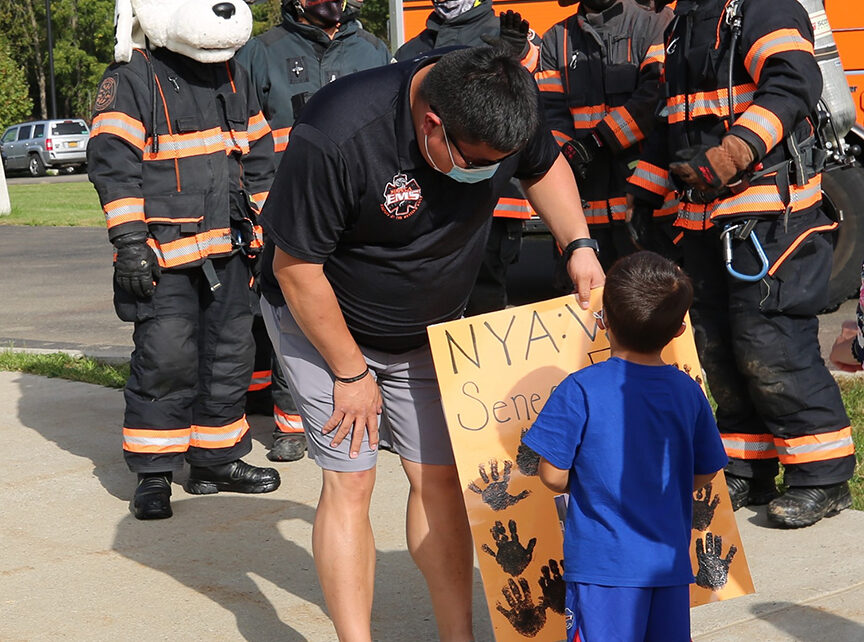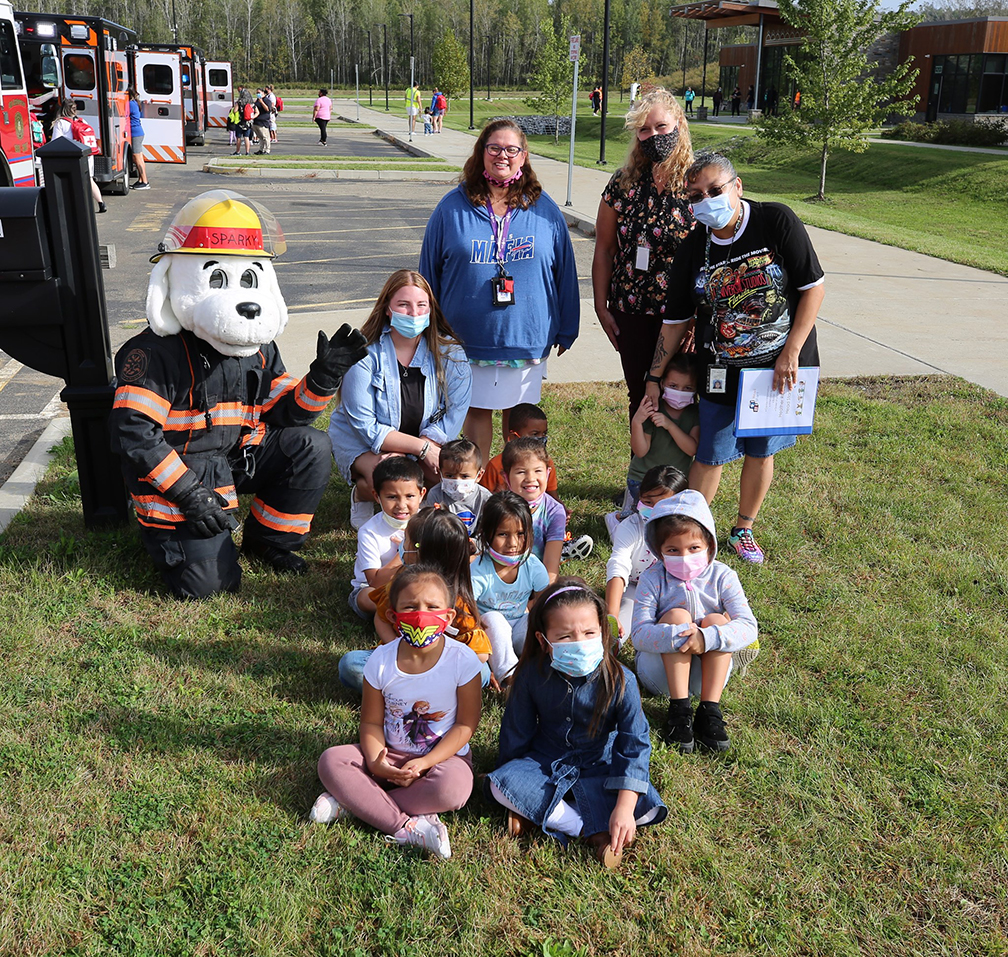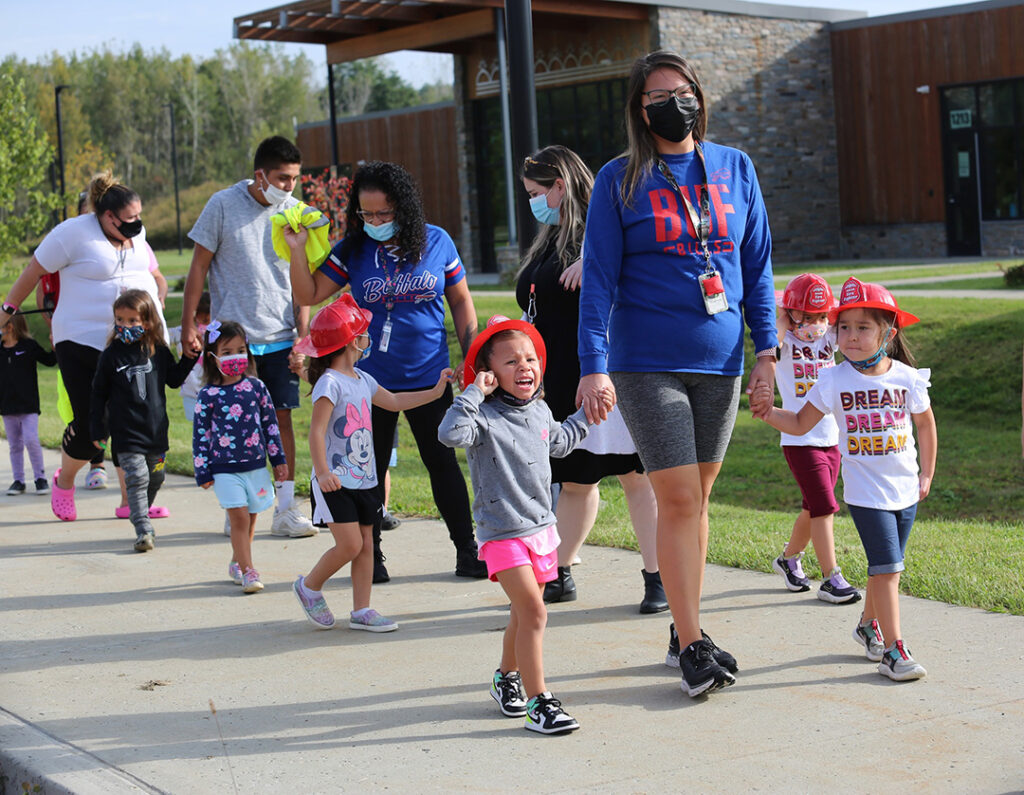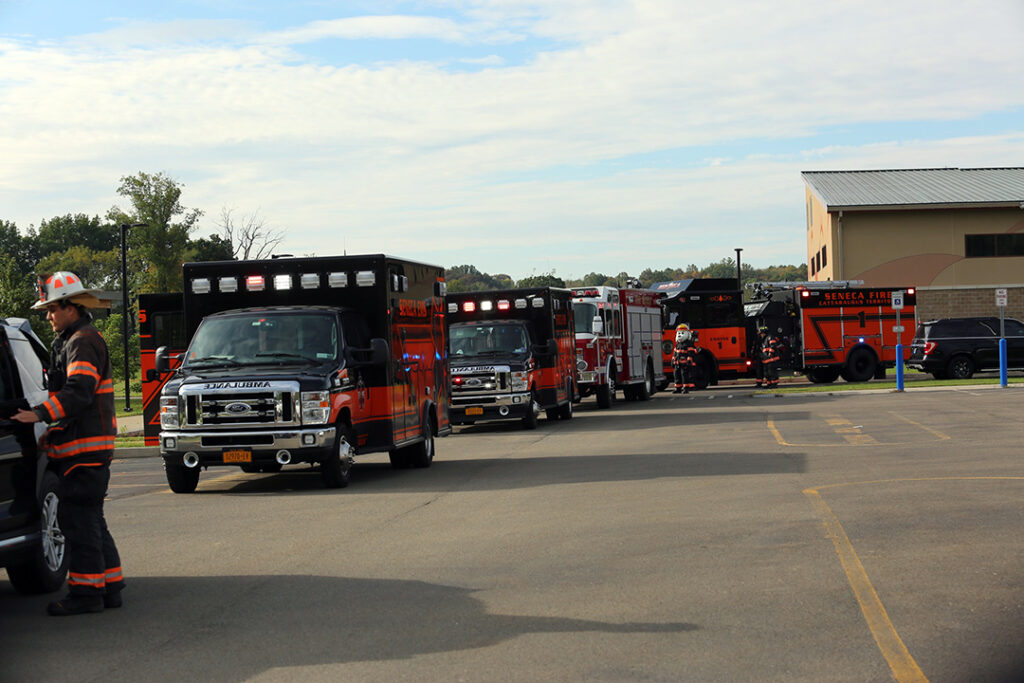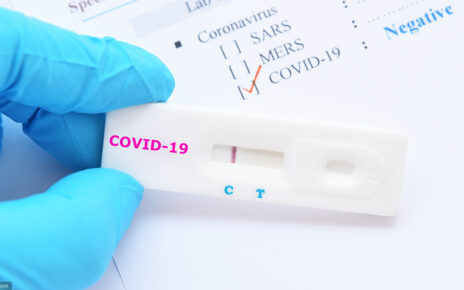2021 Campaign: Learn the Sounds of Fire Safety
Photos by Seneca Media | Campaign info: nfpa.org
In celebration of Fire Prevention Week, October 3-9, 2021; Seneca Fire Cattaraugus Territory held a fire drill with ECLC. The children were able to meet “Sparky” and have a fire apparatus tour.
Remember to change your smoke alarm batteries, test your detectors and plan an escape route with at least 2 practice runs throughout a year.
2021 Fire Prevention Week Campaign
This year’s FPW campaign, “Learn the Sounds of Fire Safety!” works to educate everyone about the different sounds the smoke and carbon monoxide alarms make. Knowing what to do when an alarm sounds will keep you and your family safe. When an alarm makes noises – a beeping sound or a chirping sound – you must take action.

What if someone in my home is deaf or hard of hearing?
There are smoke alarms and alert devices that alert people who are deaf or hard of hearing. These devices include strobe lights that flash to alert people when the smoke alarm sounds. Pillow or bed shakers designed to work with your smoke alarm also can be purchased and installed. For more information on this important topic, visit Fire Safety for the deaf or hard of hearing section.
Frequently Asked Questions about smoke and carbon monoxide (CO) alarms
What’s the difference between smoke alarms and carbon monoxide (CO) alarms? Why do I need both?
Smoke alarms sense smoke well before you can, alerting you to danger. In the event of fire, you may have as little as 2 minutes to escape safely, which is why smoke alarms need to be in every bedroom, outside of the sleeping areas (like a hallway), and on each level (including the basement). Do not put smoke alarms in your kitchen or bathrooms.
Carbon monoxide is an odorless, colorless gas that displaces oxygen in your body and brain and can render you unconscious before you even realize something is happening to you. Without vital oxygen, you are at risk of death from carbon monoxide poisoning in a short time. CO alarms detect the presence of carbon monoxide and alert you so you can get out, call 9-1-1, and let the professionals check your home.
How do I know which smoke and CO alarm to choose for my home?
Choose an alarm that is listed with a testing laboratory, meaning it has met certain standards for protection. Whether you select a unit that requires yearly changing of batteries, or a 10-year unit that you change out at the end of the 10 years, either will provide protection.
CO alarms also have a battery backup. Choose one that is listed with a testing laboratory. For the best protection, use combination smoke and carbon monoxide alarms that are interconnected throughout the home. These can be installed by a qualified electrician, so that when one sounds, they all sound. This ensures you can hear the alarm no matter where in your home the alarm originates.
Importance of fire prevention
In a fire, mere seconds can mean the difference between a safe escape and a tragedy. Fire safety education isn’t just for school children. Teenagers, adults, and the elderly are also at risk in fires, making it important for every member of the community to take some time every October during Fire Prevention Week to make sure they understand how to stay safe in case of a fire.

